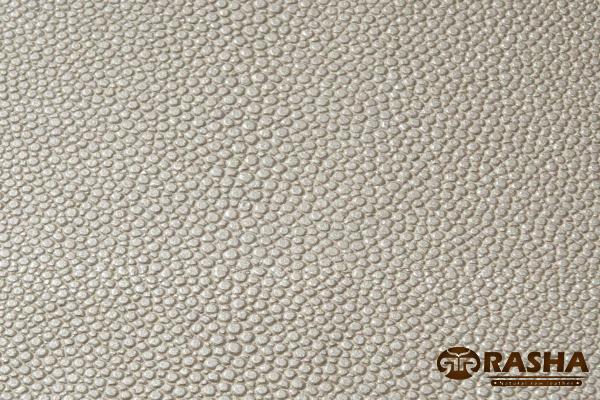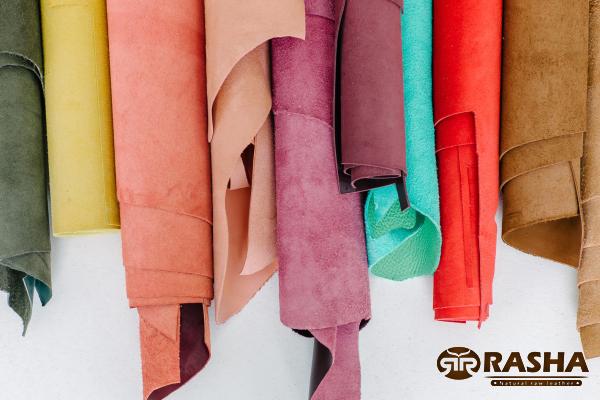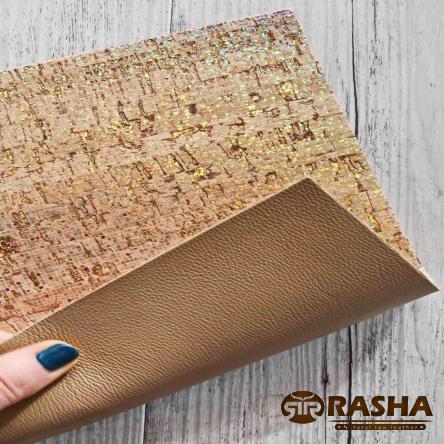Leather shoes have been an integral and timeless component of the global footwear industry. The choice of raw materials is crucial in determining the quality, durability, and aesthetic appeal of the final product. This article provides a comprehensive summary of the raw materials used in the manufacturing process of leather shoes, highlighting their characteristics, sourcing methods, and environmental impacts. 1. Leather: Leather remains the most prominent and sought-after raw material for manufacturing high-quality shoes. It is a natural byproduct of the meat industry, making use of hides and skins from animals such as cattle, sheep, goats, and pigs. Leather offers numerous advantages, including durability, breathability, flexibility, and natural insulation properties. Depending on the type of leather, it can also possess a unique grain pattern and texture, adding to its aesthetic appeal. 2. Animal Hides and Skins: The procurement of animal hides and skins is a complex and regulated process. It involves several stages, including the removal of the hides or skins from the animal’s carcass, fleshing, dehairing, and tanning. Hides and skins obtained from different animals have varying characteristics. For example, cowhide is known for its strength and durability, while sheepskin is valued for its softness and comfort. Each type requires specific treatments during processing to achieve the desired quality. 3. Tanning: Tanning is a crucial step in leather production, as it transforms raw hides and skins into a stable, usable material. This process involves treating the hide or skin with chemicals to prevent decomposition, enhance flexibility, and add color. The most common tanning methods include chrome tanning, vegetable tanning, and synthetic tanning. Each method offers distinct characteristics and environmental implications, with vegetable tanning being the most environmentally friendly option. 4. Synthetic Leather (Faux Leather): Synthetic leather, also known as faux leather, is an alternative to traditional leather derived from animal hides and skins. It is made from various materials, such as PVC (polyvinyl chloride) or PU (polyurethane), which are processed and treated to mimic the appearance and texture of genuine leather. Synthetic leather offers several advantages, including affordability, versatility, and a lower environmental impact compared to traditional leather. However, it generally lacks the durability and breathability of genuine leather. 5. Exotic Leathers: Exotic leathers, such as alligator, crocodile, snake, and ostrich, have gained popularity in the luxury footwear market. These leathers are obtained from rare and protected species, making their sourcing highly regulated. Due to their limited availability and unique aesthetic appeal, exotic leathers command higher prices and are often associated with luxury and prestige.
leather
 6. Sustainable Alternatives: As the demand for sustainable and cruelty-free products continues to rise, several sustainable alternatives to leather have emerged. These include: a. Plant-based Leather: Derived from plant materials such as mushrooms, pineapple leaves (Piñatex), and apple peels (Vegea), these innovative materials offer a greener and more sustainable option for leather-like products. b. Recycled Leather: Made from discarded leather scraps and fibers, recycled leather offers a way to reduce waste in the industry and repurpose existing resources. c. Bioengineered Leather: Cultured or lab-grown leather involves using cells from animals and replicating the tissue in a lab to produce leather without the need for animal slaughter. This emerging technology presents an ethical and sustainable solution to conventional leather. 7. Regulatory and Environmental Considerations: The leather industry faces increasing scrutiny regarding its environmental impact, worker welfare, and sourcing practices. To address these concerns, several organizations and certifications have been developed to ensure responsible sourcing, fair labor practices, and sustainable production. Examples include the Leather Working Group (LWG) and certifications such as Bluesign and the Global Organic Textile Standard (GOTS). Conclusion: Choosing the right raw materials is crucial for manufacturing leather shoes. Leather remains the most popular choice due to its durability, flexibility, and aesthetic appeal. However, synthetic leather and sustainable alternatives are gaining traction in response to growing environmental concerns and changing consumer preferences. The industry’s ongoing efforts to improve responsible sourcing, sustainable production methods, and environmental practices will further shape the future of raw materials for leather shoes.1. Raw Material Sourcing and Supply Chain Management: Effective sourcing and supply chain management are critical in ensuring a steady supply of high-quality raw materials for leather shoes. The leather industry relies on a network of suppliers, including farms, abattoirs, and tanneries. Establishing long-term relationships with reliable suppliers is crucial for maintaining consistency in the quality, quantity, and ethical sourcing of raw materials. Implementing robust supply chain protocols, such as traceability systems and audits, can help identify potential risks and ensure compliance with environmental and social standards. 2. Quality Control and Testing: Maintaining consistent quality is essential for leather shoes to meet customer expectations. Manufacturers employ rigorous quality control measures throughout the production process, from raw material inspection to final product evaluation. This includes conducting tests to assess strength, durability, colorfastness, and other performance characteristics. Quality control not only ensures that each pair of shoes meets specified standards but also helps prevent issues such as material defects and inconsistencies.
6. Sustainable Alternatives: As the demand for sustainable and cruelty-free products continues to rise, several sustainable alternatives to leather have emerged. These include: a. Plant-based Leather: Derived from plant materials such as mushrooms, pineapple leaves (Piñatex), and apple peels (Vegea), these innovative materials offer a greener and more sustainable option for leather-like products. b. Recycled Leather: Made from discarded leather scraps and fibers, recycled leather offers a way to reduce waste in the industry and repurpose existing resources. c. Bioengineered Leather: Cultured or lab-grown leather involves using cells from animals and replicating the tissue in a lab to produce leather without the need for animal slaughter. This emerging technology presents an ethical and sustainable solution to conventional leather. 7. Regulatory and Environmental Considerations: The leather industry faces increasing scrutiny regarding its environmental impact, worker welfare, and sourcing practices. To address these concerns, several organizations and certifications have been developed to ensure responsible sourcing, fair labor practices, and sustainable production. Examples include the Leather Working Group (LWG) and certifications such as Bluesign and the Global Organic Textile Standard (GOTS). Conclusion: Choosing the right raw materials is crucial for manufacturing leather shoes. Leather remains the most popular choice due to its durability, flexibility, and aesthetic appeal. However, synthetic leather and sustainable alternatives are gaining traction in response to growing environmental concerns and changing consumer preferences. The industry’s ongoing efforts to improve responsible sourcing, sustainable production methods, and environmental practices will further shape the future of raw materials for leather shoes.1. Raw Material Sourcing and Supply Chain Management: Effective sourcing and supply chain management are critical in ensuring a steady supply of high-quality raw materials for leather shoes. The leather industry relies on a network of suppliers, including farms, abattoirs, and tanneries. Establishing long-term relationships with reliable suppliers is crucial for maintaining consistency in the quality, quantity, and ethical sourcing of raw materials. Implementing robust supply chain protocols, such as traceability systems and audits, can help identify potential risks and ensure compliance with environmental and social standards. 2. Quality Control and Testing: Maintaining consistent quality is essential for leather shoes to meet customer expectations. Manufacturers employ rigorous quality control measures throughout the production process, from raw material inspection to final product evaluation. This includes conducting tests to assess strength, durability, colorfastness, and other performance characteristics. Quality control not only ensures that each pair of shoes meets specified standards but also helps prevent issues such as material defects and inconsistencies.
Specifications of leather
 3. Pricing and Cost Factors: The cost of raw materials significantly impacts the pricing of leather shoes. Leather itself can vary in cost depending on factors such as the quality, type, and availability of the hide or skin. Exotic leathers, due to their rarity and regulations, command premium prices. Labor costs, processing techniques, and overhead expenses associated with tanning and manufacturing also contribute to the final price of leather shoes. Manufacturers must strike a balance between cost-efficiency and maintaining the desired level of quality to remain competitive in the market. 4. Environmental Impact and Sustainability: The leather industry has faced criticism regarding its environmental impact, particularly due to the tanning process. Traditional leather tanning involves the use of chemicals, some of which can be harmful if not handled properly and disposed of responsibly. To mitigate these concerns, many tanneries are adopting eco-friendly tanning methods, such as vegetable tanning, which utilizes natural tannins and reduces chemical usage. Additionally, the emergence of sustainable alternatives and increased demand for cruelty-free products are driving the industry to explore greener manufacturing processes and materials. 5. Market Trends and Consumer Preferences: Understanding market trends and consumer preferences is vital for leather shoe manufacturers to optimize their product offerings. Currently, there is an increased demand for sustainable and eco-friendly products, driven by consumer awareness and changing attitudes towards environmental issues. Manufacturers are responding by incorporating sustainable practices into their supply chain, offering vegan and ethically-produced options, and introducing innovative materials. Staying informed about market trends and consumer demands can help businesses adapt their strategies and remain competitive in this evolving industry. 6. Technological Advancements in Leather Production: Technological advancements have revolutionized the leather industry, enhancing efficiency, quality, and sustainability. Automation has improved production processes, reducing labor costs and increasing output. Innovative technologies, such as laser cutting and 3D printing, have also enabled precise pattern-making and customization. Furthermore, advancements in bioengineering and biofabrication offer the potential for lab-grown leather that replicates the properties of genuine leather without the need for animal slaughter. Embracing and investing in these technologies can position businesses at the forefront of the industry. 7. Branding and Differentiation: In a highly competitive market, branding and product differentiation are crucial for leather shoe manufacturers. Branding encompasses various aspects, including brand identity, values, storytelling, and customer engagement. Communicating the unique selling points of a brand, such as the use of premium raw materials, ethical sourcing practices, or sustainable production methods, can resonate with consumers and differentiate a brand in the market. Establishing a strong brand presence and connecting with target audiences can help businesses build loyal customer relationships and drive sales.
3. Pricing and Cost Factors: The cost of raw materials significantly impacts the pricing of leather shoes. Leather itself can vary in cost depending on factors such as the quality, type, and availability of the hide or skin. Exotic leathers, due to their rarity and regulations, command premium prices. Labor costs, processing techniques, and overhead expenses associated with tanning and manufacturing also contribute to the final price of leather shoes. Manufacturers must strike a balance between cost-efficiency and maintaining the desired level of quality to remain competitive in the market. 4. Environmental Impact and Sustainability: The leather industry has faced criticism regarding its environmental impact, particularly due to the tanning process. Traditional leather tanning involves the use of chemicals, some of which can be harmful if not handled properly and disposed of responsibly. To mitigate these concerns, many tanneries are adopting eco-friendly tanning methods, such as vegetable tanning, which utilizes natural tannins and reduces chemical usage. Additionally, the emergence of sustainable alternatives and increased demand for cruelty-free products are driving the industry to explore greener manufacturing processes and materials. 5. Market Trends and Consumer Preferences: Understanding market trends and consumer preferences is vital for leather shoe manufacturers to optimize their product offerings. Currently, there is an increased demand for sustainable and eco-friendly products, driven by consumer awareness and changing attitudes towards environmental issues. Manufacturers are responding by incorporating sustainable practices into their supply chain, offering vegan and ethically-produced options, and introducing innovative materials. Staying informed about market trends and consumer demands can help businesses adapt their strategies and remain competitive in this evolving industry. 6. Technological Advancements in Leather Production: Technological advancements have revolutionized the leather industry, enhancing efficiency, quality, and sustainability. Automation has improved production processes, reducing labor costs and increasing output. Innovative technologies, such as laser cutting and 3D printing, have also enabled precise pattern-making and customization. Furthermore, advancements in bioengineering and biofabrication offer the potential for lab-grown leather that replicates the properties of genuine leather without the need for animal slaughter. Embracing and investing in these technologies can position businesses at the forefront of the industry. 7. Branding and Differentiation: In a highly competitive market, branding and product differentiation are crucial for leather shoe manufacturers. Branding encompasses various aspects, including brand identity, values, storytelling, and customer engagement. Communicating the unique selling points of a brand, such as the use of premium raw materials, ethical sourcing practices, or sustainable production methods, can resonate with consumers and differentiate a brand in the market. Establishing a strong brand presence and connecting with target audiences can help businesses build loyal customer relationships and drive sales.
buy leather
 8. International Trade and Global Supply Chains: The leather industry operates on a global scale, with manufacturers and suppliers located across multiple countries. International trade plays a significant role in the procurement of raw materials and meeting consumer demand. However, global supply chains also come with challenges, including logistics, customs regulations, currency fluctuations, and compliance with international standards. Building strong partnerships, ensuring transparent communication, and conducting thorough research on import and export regulations are essential for successfully navigating the complexities of international trade. 9. Collaboration and Partnerships: Collaboration and partnerships within the leather industry can foster innovation, sustainability, and growth. Manufacturers can collaborate with tanneries, suppliers, and industry associations to share best practices, develop new materials, and drive sustainable initiatives. Collaborative efforts can also extend to working with designers, fashion brands, and retailers to create exclusive collections or co-branded products. Strategic partnerships can not only expand market reach but also enhance brand reputation and create mutually beneficial growth opportunities. 10. Ethical Considerations and Corporate Social Responsibility: Ethical considerations and corporate social responsibility are increasingly important for businesses in the leather industry. Responsible sourcing practices, fair labor conditions, and animal welfare are critical components of ethical manufacturing. Adhering to international labor standards, complying with regulations related to endangered and protected species, and promoting transparency in the supply chain are imperative for building trust with consumers and stakeholders. Implementing robust ethical policies and reporting measures can help businesses demonstrate their commitment to social and environmental responsibility. Conclusion: The choices surrounding raw materials for leather shoes are multi-faceted, involving considerations of quality, sustainability, cost, and consumer preferences. As the industry continues to evolve, manufacturers must stay abreast of market trends, adopt innovative technologies, and embrace sustainable practices. By incorporating ethical sourcing, responsible management of the supply chain, and strategic partnerships, businesses can position themselves as leaders in the leather shoe market, meeting the demands of an increasingly conscious consumer base.
8. International Trade and Global Supply Chains: The leather industry operates on a global scale, with manufacturers and suppliers located across multiple countries. International trade plays a significant role in the procurement of raw materials and meeting consumer demand. However, global supply chains also come with challenges, including logistics, customs regulations, currency fluctuations, and compliance with international standards. Building strong partnerships, ensuring transparent communication, and conducting thorough research on import and export regulations are essential for successfully navigating the complexities of international trade. 9. Collaboration and Partnerships: Collaboration and partnerships within the leather industry can foster innovation, sustainability, and growth. Manufacturers can collaborate with tanneries, suppliers, and industry associations to share best practices, develop new materials, and drive sustainable initiatives. Collaborative efforts can also extend to working with designers, fashion brands, and retailers to create exclusive collections or co-branded products. Strategic partnerships can not only expand market reach but also enhance brand reputation and create mutually beneficial growth opportunities. 10. Ethical Considerations and Corporate Social Responsibility: Ethical considerations and corporate social responsibility are increasingly important for businesses in the leather industry. Responsible sourcing practices, fair labor conditions, and animal welfare are critical components of ethical manufacturing. Adhering to international labor standards, complying with regulations related to endangered and protected species, and promoting transparency in the supply chain are imperative for building trust with consumers and stakeholders. Implementing robust ethical policies and reporting measures can help businesses demonstrate their commitment to social and environmental responsibility. Conclusion: The choices surrounding raw materials for leather shoes are multi-faceted, involving considerations of quality, sustainability, cost, and consumer preferences. As the industry continues to evolve, manufacturers must stay abreast of market trends, adopt innovative technologies, and embrace sustainable practices. By incorporating ethical sourcing, responsible management of the supply chain, and strategic partnerships, businesses can position themselves as leaders in the leather shoe market, meeting the demands of an increasingly conscious consumer base.










Your comment submitted.